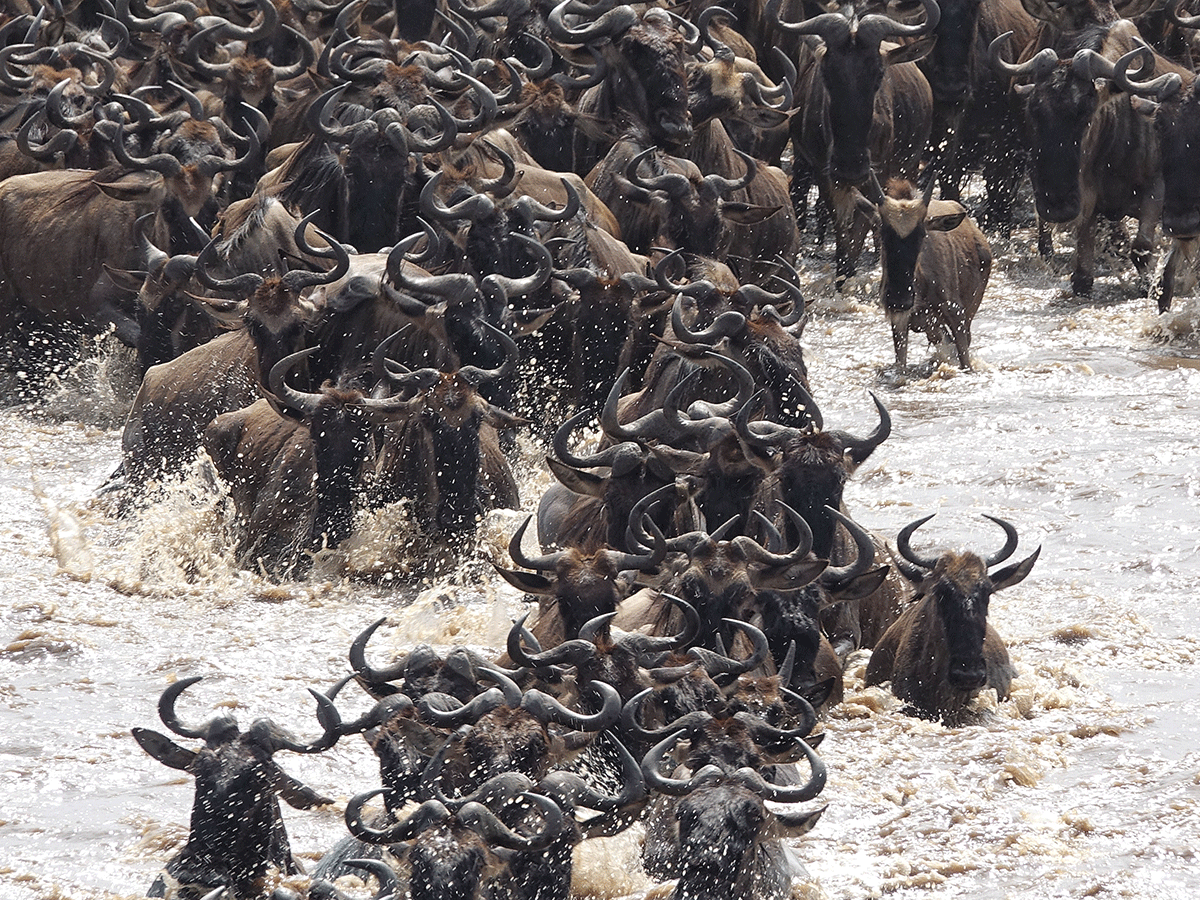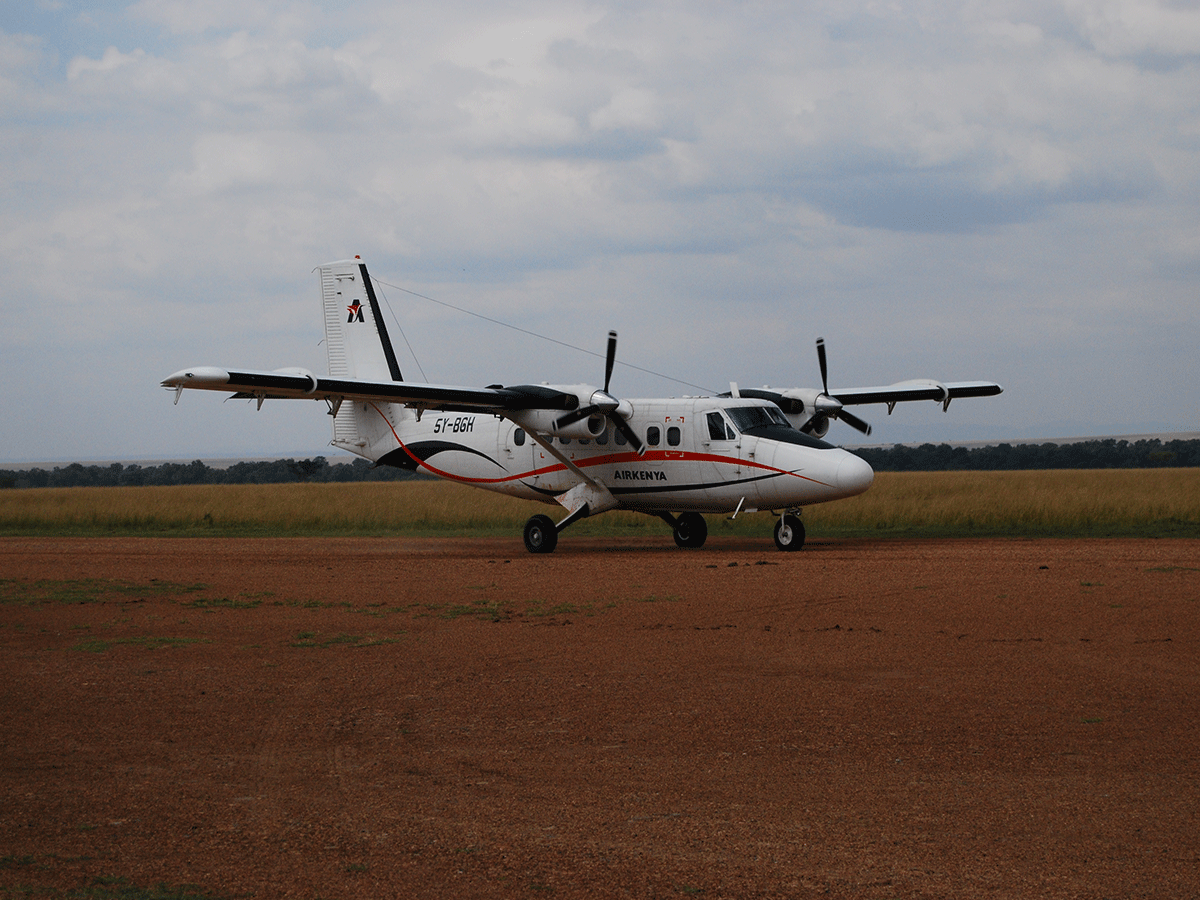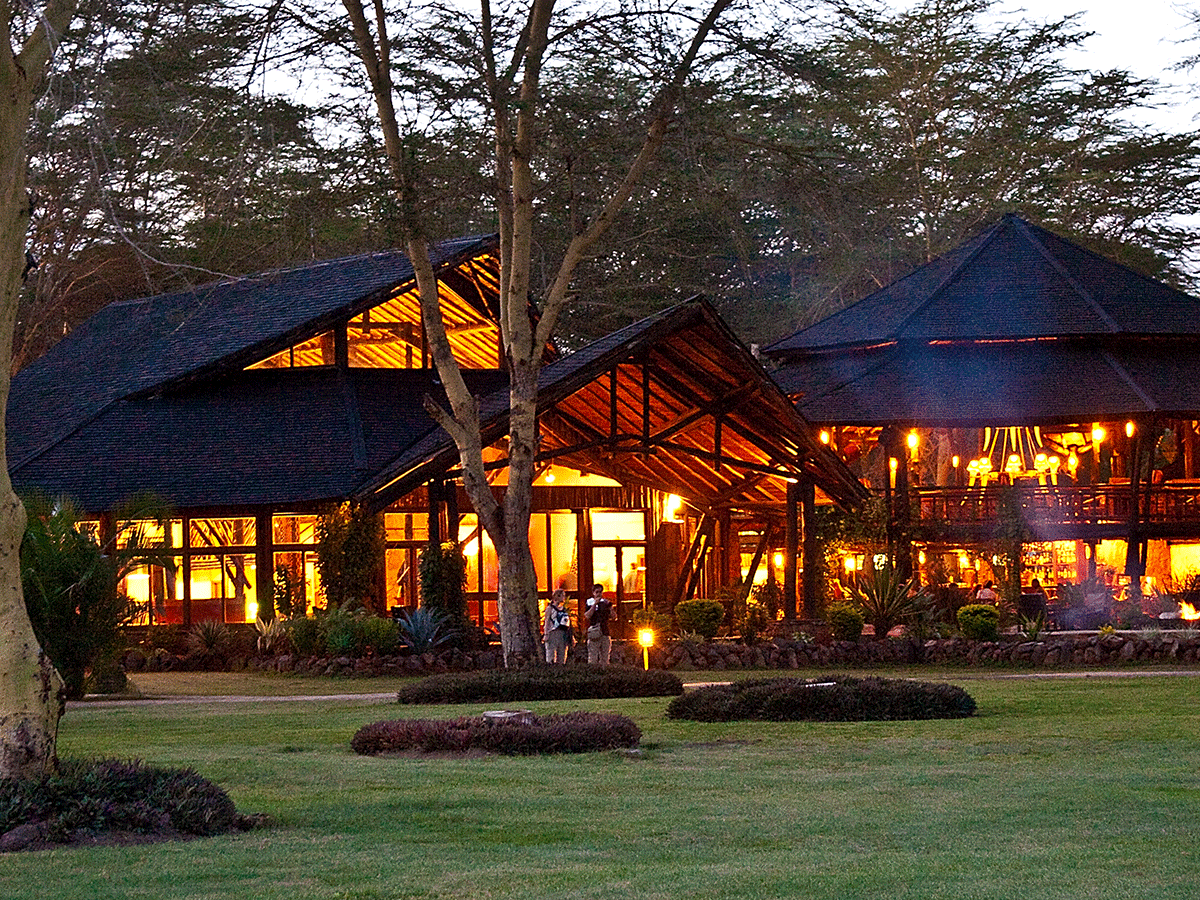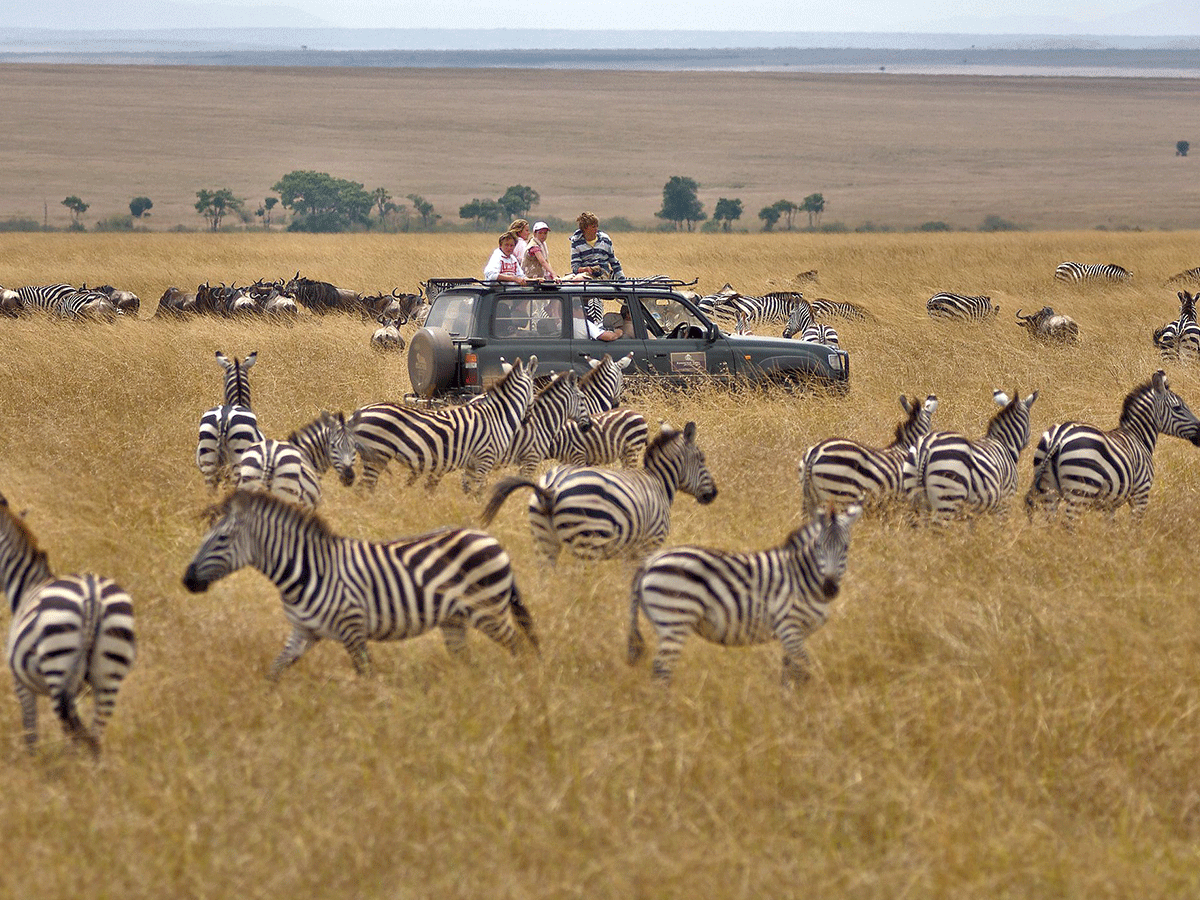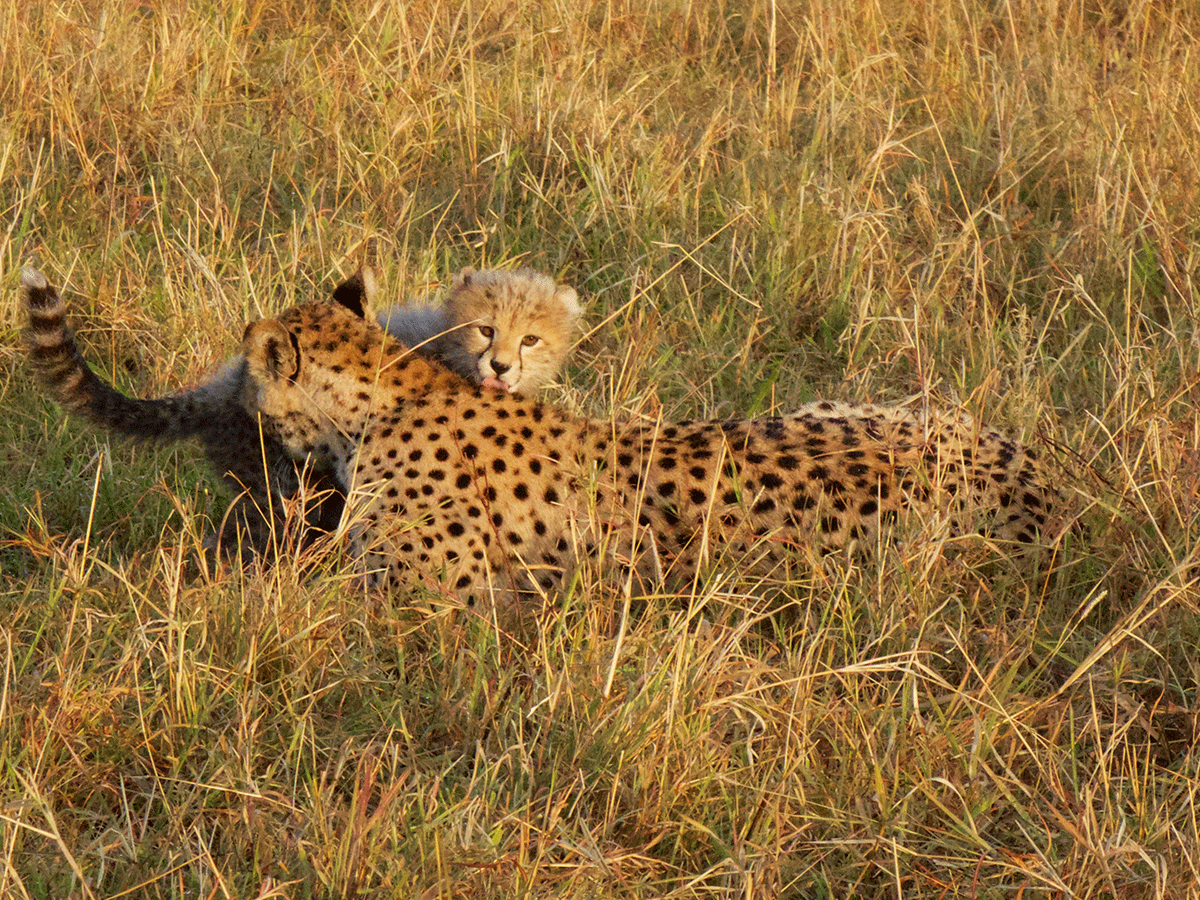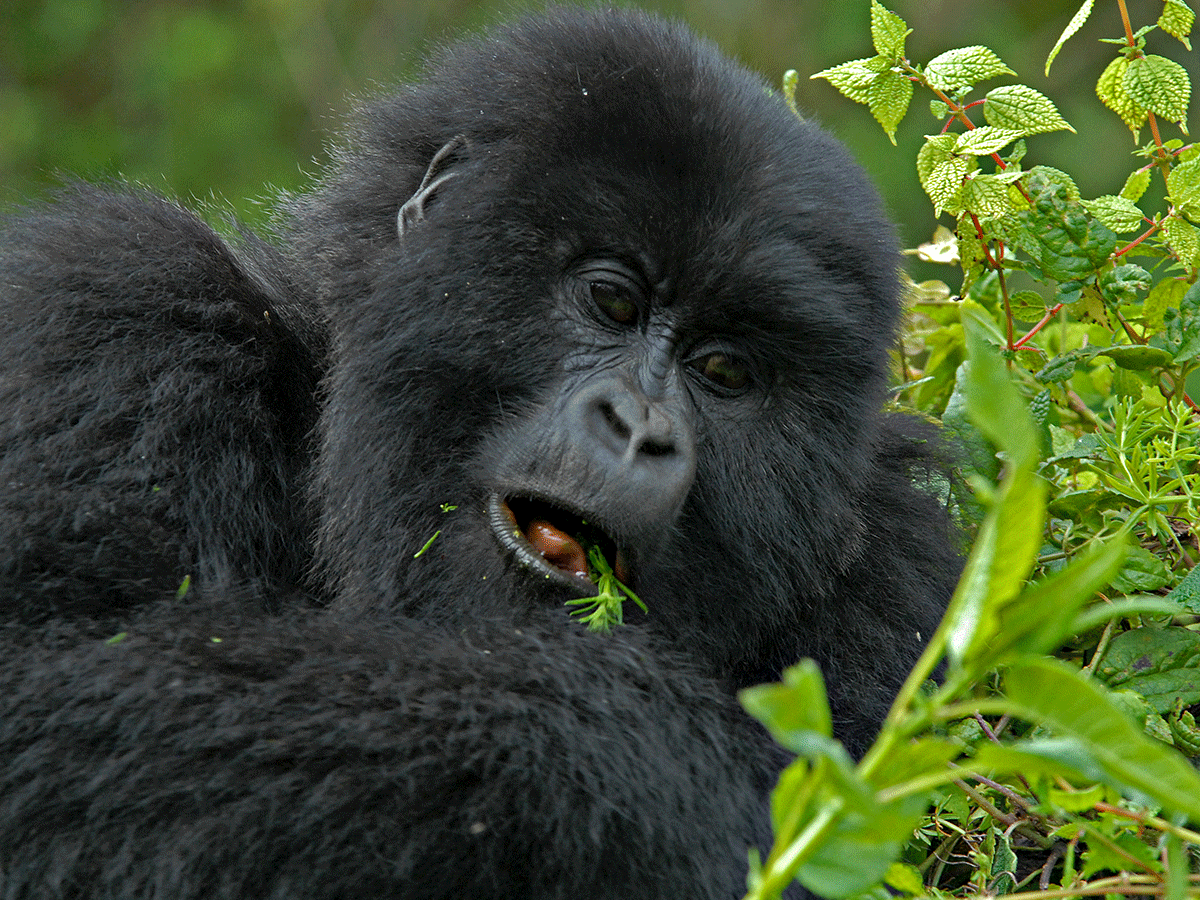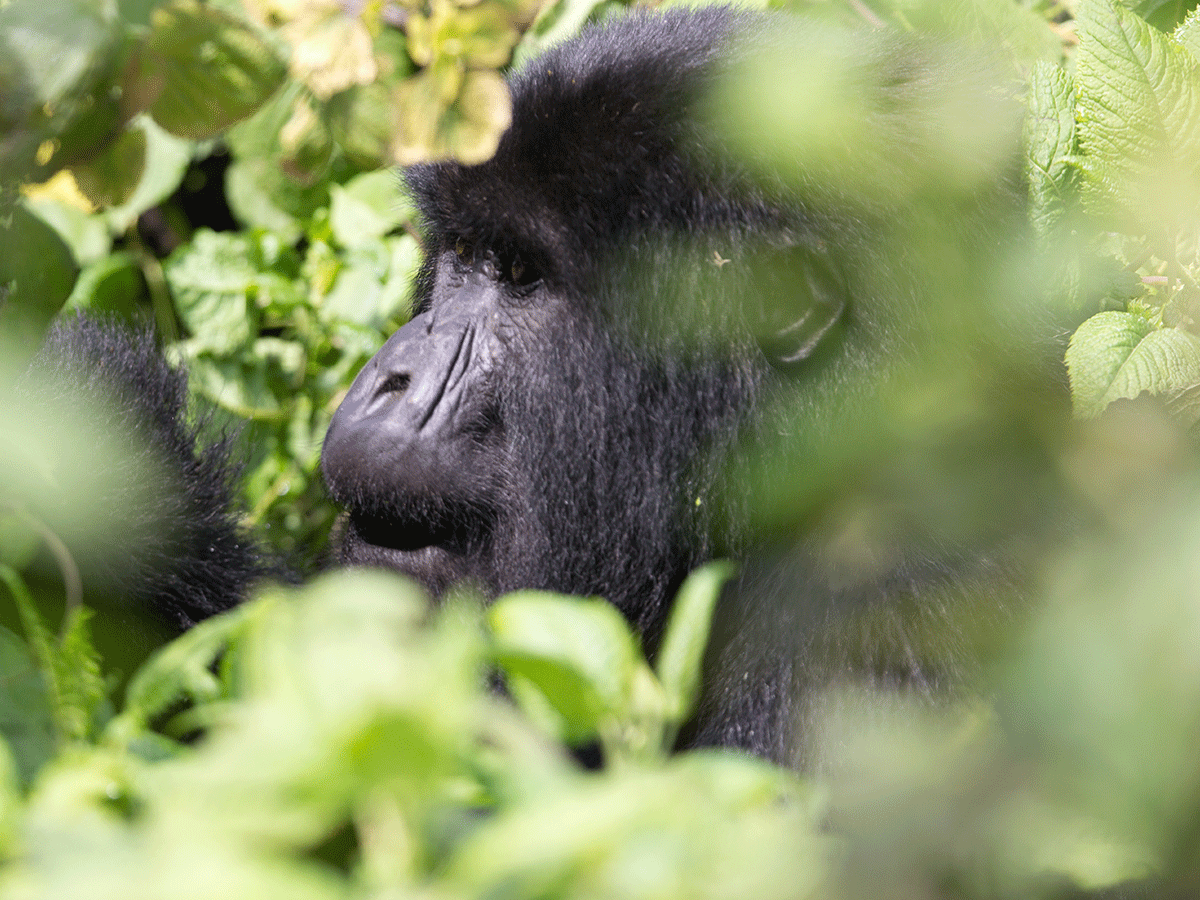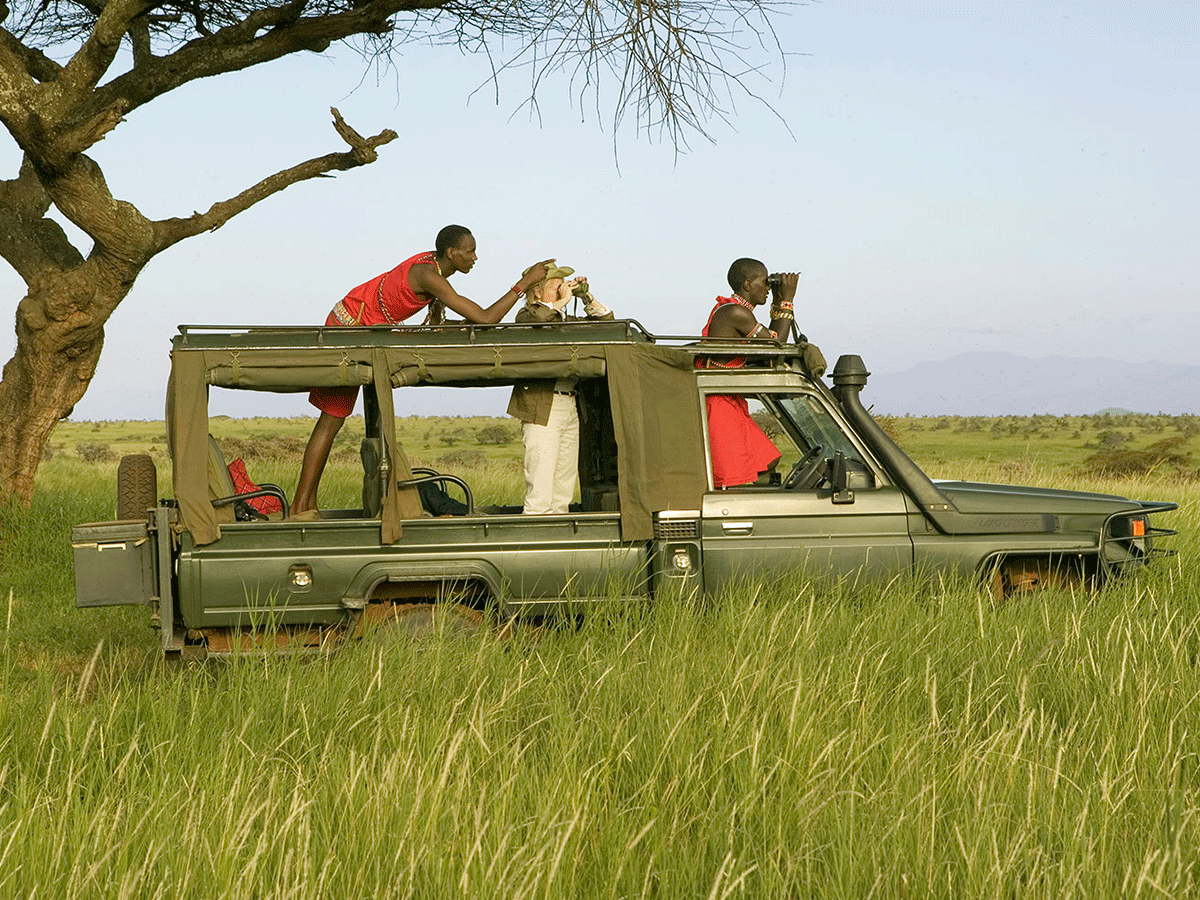Kenya Safaris, Tours & Holidays
Home » African Safari Destinations » Kenya Safaris, Tours & Holidays
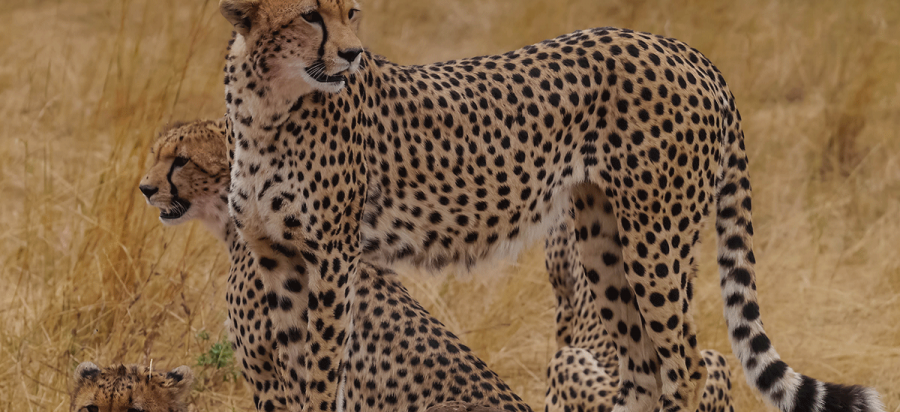
Kenya Safaris, Tours & Holidays
Kenya is a country in East Africa with a coastline on the Indian Ocean. It encompasses Savannah, Lake lands, the dramatic Great Rift Valley and mountain highlands. It’s also home to wildlife like lions, elephants and rhinos. From Nairobi, the capital, safaris visit the Maasai Mara Reserve, known for its annual wildebeest migrations, and Amboseli National Park which offers spectacular views of Tanzania’s 5,895m Mt. Kilimanjaro.
Kenya is a year-round safari destination. It is busy during the dry season from June to October, when the sparse vegetation and limited water causes the game to gather around water, making them easy to find and to view. However, this is the most crowded and busy time to go on safari, especially in the Masai Mara from the latter half of August to October, when the Great Migration usually arrives.
Safaris cost a premium during this time and the whole of Kenya is busy as guests do full safari circuits, combining Meru, Lewa, Samburu, Laikipia, the Rift Valley lakes and the coast into itineraries that can last as long as three months.
During the rest of the year, higher rainfall makes the vegetation thick, green and lush. The wildlife areas are uncrowded and most animals give birth to their young during this time. Lower rates mean longer and more leisurely safaris become feasible. However, when the rains really get heavy, usually between April and May, roads and airstrips become unusable and some lodges close until things dry out.
The decision when to travel depends mostly on your preferences and what you want to see. For those only wanting to see the Great Migration the choice is obvious. First-timers seeking the Big Five would also do well between June and November. However, anyone looking for a good safari experience can travel throughout the year. The wildlife, culture and landscapes are always there and a true Kenyan safari is about experiencing them in the way that most appeals to you.
While the Masai Mara boasts incredible year-round wildlife, the Great Migration is invariably a huge drawcard for visitors. The peak season for Migration sightings in Kenya is considered to be between June and October and you are more likely to see river crossings during this time. However, Migration is a year-round phenomenon and you are likely to see large herds of wildebeest at any time of year. There are far fewer visitors outside of peak season and sightings tend to be more leisurely and exclusive.
Please remember that the movements of the Migration are affected by the weather and may vary widely from year to year. The movement of the herds depends on the arrival of the rains and the animals may cross back and forth between the Serengeti and the Masai Mara a number of times in any given cycle. As it can be difficult to pinpoint specific times and accommodation tends to book up quickly for peak season, we recommend that you plan well ahead of time if you are travelling specifically to see the Migration. However, no matter what time of year you travel, the wildlife experience in the Masai Mara is guaranteed to be extraordinary.
How to get to Kenya
Flying is the only straightforward way of getting to Kenya unless you’re travelling overland from southern Africa. Flights to Kenya are generally most expensive from early July to late October and from mid-December to mid-January. Make reservations as far in advance as possible, especially if you want to travel at these popular times.
Air Tanzania is the national carrier of the Republic of Tanzania, the airline operates several flights into Tanzania and other airlines like Kenya Airways, KLM Royal Dutch Airlines, Qatar Airlines, Turkish Airlines, Brussels Airlines and Ethiopian Airlines also operate flights to Tanzania.
By road Tanzania can be accessed through Uganda, the Democratic Republic of Congo, Burundi and Kenya and Rwanda with all these countries having modern border crossing points however across Lake Tanganyika the country borders Zambia, Malawi and Mozambique and some parts of Tanzania are bordered by the Indian Ocean.
Visas, passport and entry requirements for Kenya
A passport with at least two blank pages, six months validity, and a visa are required to enter Kenya. Single-entry visas are available online and upon arrival at Kenyan airports; however, Kenyan Immigration plans to end visas upon arrival in the future.
Kenya health system
Kenya’s scenery, magnificent wildlife and high year-round temperatures make it a popular destination among ex-pats looking for a unique experience of life in Africa. In recent years the country’s healthcare system has seen dramatic improvements, but there are still a number of issues to be mindful of when considering healthcare options in Kenya.
The Kenyan health system can be divided into three categories, Public providers, private non-profit organisations (including faith-based and mission hospitals as well as local and international NGOs) and private for-profit health care providers.
Basic government-funded public healthcare is provided at primary healthcare centres and dispensaries. The government pharmaceutical chain KEMSA provides medication and medical supplies to government dispensaries. These are usually run and managed by nurses. Public health centres provide free services for simple ailments such as the common cold and flu, uncomplicated malaria and minor skin conditions. Those patients with conditions that cannot be handled by a nurse are referred to clinics and hospitals.
While ex-pats are not restricted from using public healthcare, the standards they will encounter are well below those they are accustomed to. Expats living in Kenya will find that public healthcare programmes and facilities tend to be understaffed, poorly equipped and lacking supplies. The Central Province and Nairobi offer the best public healthcare facilities, whereas the North-Eastern Province is the most under-developed.
Emergency services in Kenya are limited and largely unreliable. Ambulance response times tend to be slow as there are not many rapid response vehicles available. Even when available, Kenyan ambulances may not always be equipped to ex-pat standards.
Some serious health issues will require medical evacuation. This can also be extremely costly and ex-pats should ensure that their health insurance will provide appropriate cover.
The medical emergency number in Kenya is 999 and is run by English speaking operators. Expats should be sure to carry the contact details of their nearest embassy for cases of emergency.
Malaria and vaccination for Kenya
The CDC and WHO recommend the following vaccinations for Kenya: hepatitis A, hepatitis B, typhoid, cholera, yellow fever, rabies, meningitis, polio, measles, mumps and rubella (MMR), Tdap (tetanus, diphtheria and pertussis), chickenpox, shingles, pneumonia and influenza, Recommended for travellers to most regions.
A Yellow Fever vaccination certificate is only required for travellers 1 year of age and older coming from – or who are in airport transit for more than 12 hours within – a country with risk of Yellow Fever transmission.
High-risk areas: atovaquone/proguanil OR doxycycline OR mefloquine is usually advised for those visiting risk areas. Low to no risk areas: malaria tablets are not normally advised for Nairobi and the immediate surrounding areas.
The official currency of Kenya
Kenya’s national currency is the Kenyan Shilling and although foreign currencies such as US Dollars are widely accepted (and indeed the currency required for activities like hot-air balloon safaris) we’d recommend using the local currency to pay for bar bills, souvenirs and meals not included in your itinerary.
The official language of Kenya
Kenya is a multilingual country. The Bantu Swahili language and English, the latter being inherited from colonial rule (see British Kenya), are widely spoken as lingua franca. They serve as the two official working languages.
Best time to travel to Kenya
One of the best times to visit Kenya is from July to September, during the country’s dry season, which also coincides with the Great Migration of wildebeest and zebra. The rainy seasons are also good times to travel, as there are fewer visitors and you can admire the striking emerald vegetation.
What to wear on safari in Kenya
Though many Kenyans choose to dress conservatively with men wearing shirts with long sleeves, while women wear trousers or skirts which cover the knee. In more tourist areas, however, everyday wear can be kept more casual. Due to the heat and humidity, it’s best to wear light, cotton clothing.
What to bring for a safari in Kenya
The below safari essentials list is supplied as a general guide on what to take on your safari. Where possible luggage should be kept to a minimum due to the weight/ space restrictions of 15kg total weight allowance per person (including carry-on bags) on light aircraft, but we are able to store excess baggage at our head office in Nairobi (ask our Sales Team for more information).
Since August 2017 plastic bags have been banned in Kenya. Being in possession of a plastic bag is now against the law (although the government has indicated that any penalties will initially apply to retail outlets and manufacturing companies in Kenya rather than individuals). Visitors are advised to avoid packing any plastic bags in their suitcases or in carry-on hand luggage.
- Trainers / Walking shoes/ safari boots.
- Comfortable shoes: loafers / moccasins / deck shoes.
- Hat.
- Jacket / Windbreaker / Fleece for the very chilly early morning and evening game drives.
- Waterproof light rain jacket.
- Warm sweater/ fleece jacket.
- 2 pairs of safari trousers/ chinos.
- 2 pairs of safari shorts.
Car hire and driving in Kenya
Driving between the usual touristic spots is safe as long as you do not drive at night and you use your good sense. Kisumu does not qualify as touristic so the road might be less well guarded. Driving in Kenya is something to get used to.
Kenya drives on the left-hand side of the road in mainly right-hand drive vehicles are more convenient and we advise on booking tailor-made safari vacations to avoid the hassle of which way to go.
Local food of Kenya
Different communities have their own native foods. Staples are maize and other cereals depending on the region, including millet and sorghum ate with various meats and vegetables. The foods that are universally eaten in Kenya are ugali, sukuma wiki, and Nyama Choma. Make sure you try it while in Kenya.
Tipping while travelling in Kenya
There are no hard and fast rules for tipping in Kenya but be aware that most people in the service industry earn very little and depend on gratuities to make up their income. Safari guides should be tipped the equivalent of about USD $10-15 per person per day and a few dollars should go to the driver, cook and porters.
For private safaris please contact wilderness explorers Africa for your tipping Guide
Further information for Kenya
Currently, Kenya is one of the most visited countries in East Africa and travellers can try to plan safaris way in advance more so if you’re looking to experience the great wildebeest migration
Safety of Kenya
Terrorism is, unfortunately, something you have to consider when visiting Kenya, although the vast majority of the country is safe to visit. Remember that reports of an attack in, for example, Mombasa is likely to have very little impact upon the safety of visiting the Masai Mara or even Tsavo East National Park.
SAFARI TOURS AND HOLIDAYS
NATIONAL PARKS
FAUNA & FLORA
| Wildlife |
| Birds |
| Vegetation |

